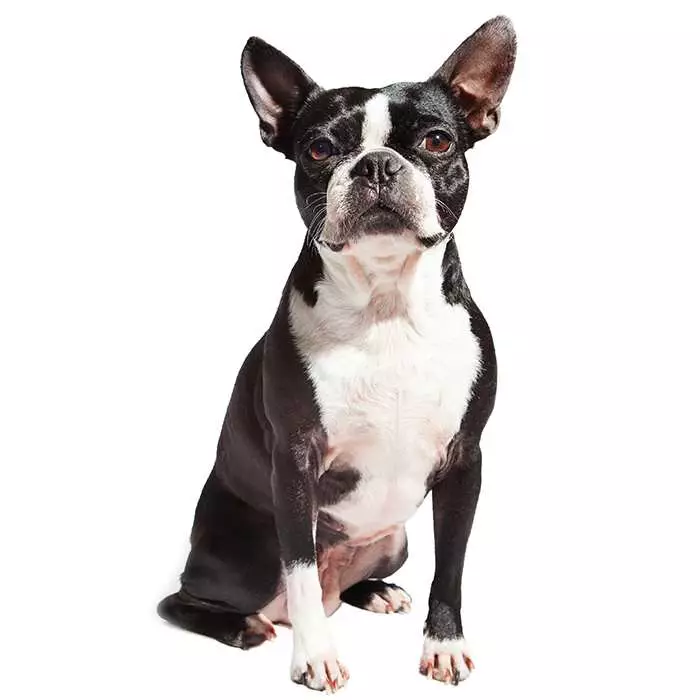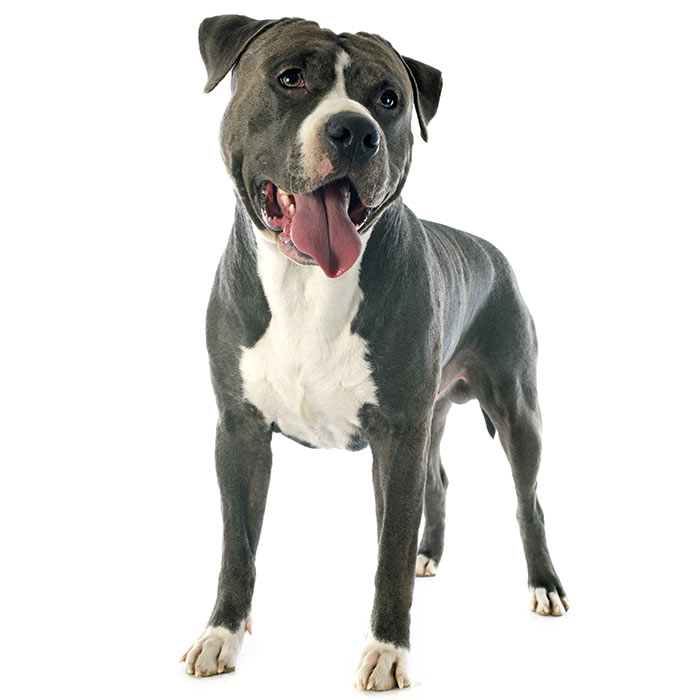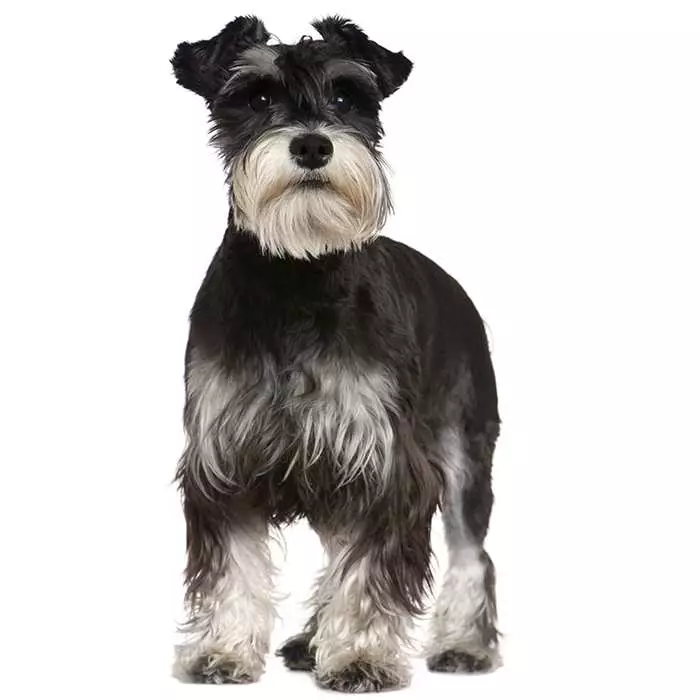English Toy Terrier
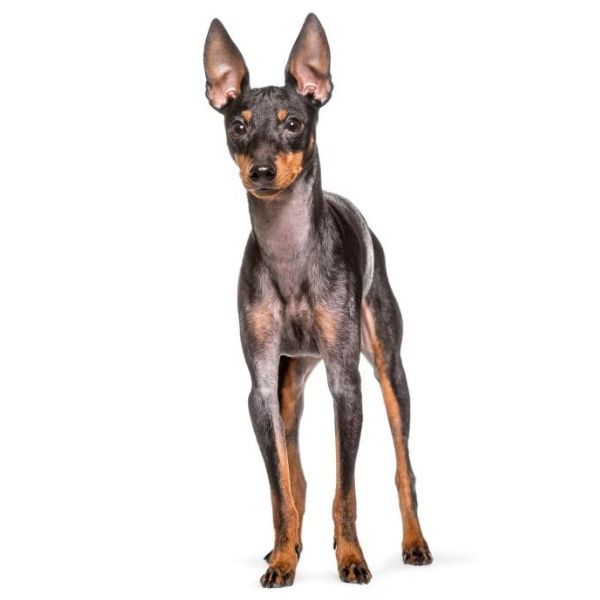

| Recommended for | Families & singles |
| Breed Classification | Toy group |
| Other names | Toy Manchester Terrier, Black-and-tan Toy Terrier |
| Lifespan | 12 to 14 years |
| Size | Small |
| Temperament | Alert, affectionate, loyal |
| Intelligence | Above average |
| Tendency to bark | Above average |
| Maintenance Level | Low |
| Health Risk | This breed is in the medium risk category for developing health issues, hence it is one of the most affordable breeds to insure. |
Insuring an English Toy Terrier?
Get our award-winning Nose-to-Tail Cover with up to $30k annual benefit limit, up to 90% of eligible vet bills back, and no sub-limits.
Get a quick quote
Is this breed right for you?
Try our breed selector quiz to find out your best matching breed!
Insuring an English Toy Terrier?
Get our award-winning Nose-to-Tail Cover with up to $30k annual benefit limit, up to 90% of eligible vet bills back, and no sub-limits.
Get a quick quote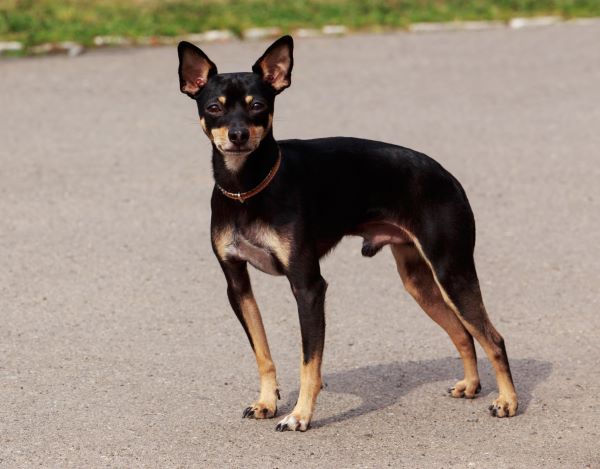
Breed history of English Toy Terriers
The English Toy Terrier is reputedly the oldest English toy breed in existence. It is known as the Manchester Terrier in the USA, after the English city where it was first bred in order to chase and kill rodents during the Industial Revolution. Many people have heard of the breed through the famous children’s story of the Pied Piper of Hamelin.
Today’s English Toy Terrier can be traced back to the Black and Tan Terriers first recorded in the 16th century. During the 1800’s, these terriers were in high demand as ratters and were carried by hunters in their pockets and set down when necessary to flush out foxes, rabbits and other small game. Another popular past-time entailed rat-killing contests in which terriers were turned loose in a rat pit and spectators placed bets on how long it would take the dogs to kill the rats. Breeders in Manchester worked toward producing a two-in-one dog to excel at both hunting and ratting. They crossed Black and Tan Terriers with Whippets, resulting in a distinctive Manchester type of terrier.
The breed reached the height of its popularity during the Victorian Era. The Standard Manchester Terrier was thought to be a fitting companion to the “discerning gentleman” but the Victorian ladies wanted a smaller dog to entertain themselves. As the terrier became ever more popular, the demand grew for increasingly smaller dogs, leading to the miniaturisation of the breed. A lot of interbreeding occurred, with the offspring from these litters being very small and suffering from many health problems. As a result, the breed declined in popularity and almost disappeared altogether.
Thanks to a few dedicated breeders, today’s Toy Manchester Terrier is much healthier and sounder, although slightly bigger than its Victorian ancestors, whose size took priority over the animal’s health and temperament.
In Australia, the breed was fairly popular around the 1960’s, although it has faded in popularity over time until by the 1990’s there were only two breeding pairs left in this country. Since then a concerted effort has been made to boost the numbers, but these remain relatively small (around 100), and there are no English Toy Terrier clubs in this country.
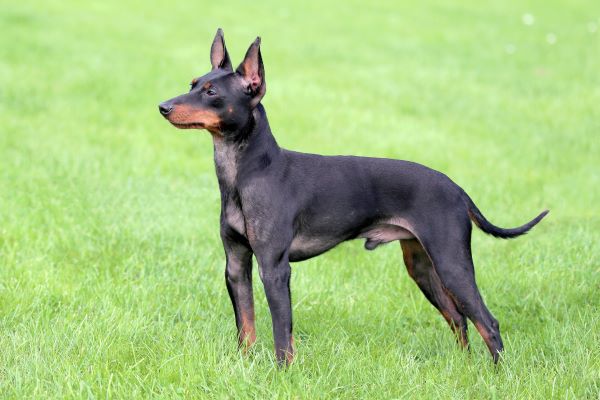
Physical description of English Toy Terriers
English Toy Terriers have almond shaped eyes and pointed, erect, ‘candle-flame’ ears set on a long, wedge-shaped head. They are slightly longer than they are tall and are fine-boned, with a long, slender tail, givng them an athletic build and a graceful and somewhat aristocratic appearance.
Their smooth, fine, single short coat is jet black and tan, with the tan predominant on the lower legs, to the sides of the muzzle and around the anus. As the dog ages, the black extends into the tan areas, leaving a ‘kissing spot’ (a tan spot) on each side of the face.
Some might think of the English Toy Terrier as a miniature version of a Doberman or may mistake them for a Miniature Pinscher. They have the same colouring, shiny coat and long pointy face as a Doberman, but are obviously much smaller.
| Weight range | Up to 3.5 kg |
| Height range | 24 to 30 cm |
| Colours | Predominantly black with tan markings |
| Coat length | Short |
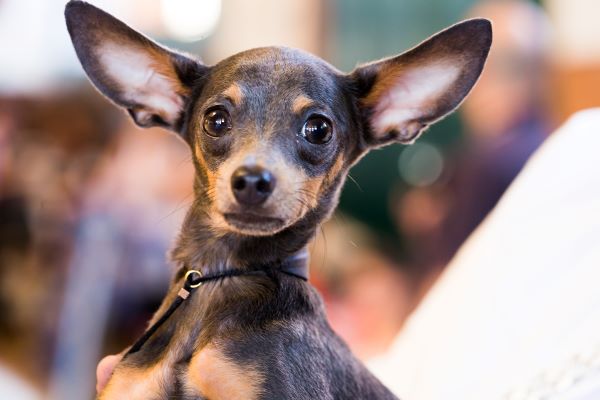
English Toy Terrier personality and temperament
English Toy Terriers are alert, stubborn and fearless. They needed all these characteristics in the past when they were used to chase and kill rodents. And they are certainly as brave as Dobermans, whom they are thought to physically resemble (on a much smaller scale)! But other than that they are typical terriers: spirited, bright and very active, with a great zest for life.
They are also lovable, affectionate, friendly, totally devoted to their family and easily bond to one person. They will quite happily live in either the town or country. They enjoy exercise, but also like plenty of cuddles. As well as rat catchers, they were also used as entertainers of fine ladies back in the old days, and today’s English Toy Terriers are still natural entertainers who like to perform and please their owners.
While their tiny size will not scare away anybody, they are nevertheless highly dependable watchdogs. They are quite suspicious of strangers and will give warning of any unusual noise or visitors. Hearing their bark alone, any intruder is likely to think that there’s a big scary dog fiercely guarding the house! Barking is quite common for this breed and therefore they are not recommended as an apartment dog.
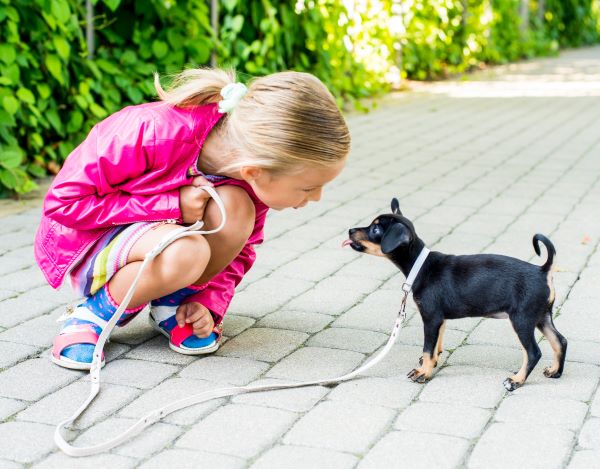
English Toy Terriers with kids and other pets
English Toys love physical contact, love being petted and usually enjoy the company of children. Although not typically a snappy breed, the English Toy Terrier is better suited to families with older children as they can be impatient with teasing or clumsy handling that can occur with young children.
ETT’s should be socialised with other household animals and children from an early age. Because this breed was originally used as a ratter and for hunting rabbits, they must be supervised with or kept away from small animals such as mice, rats, rabbits, guinea pigs, and possibly young kittens. The male dogs can be quite dominant which can be an issue if keeping males together. In contrast, the females are very easy going.
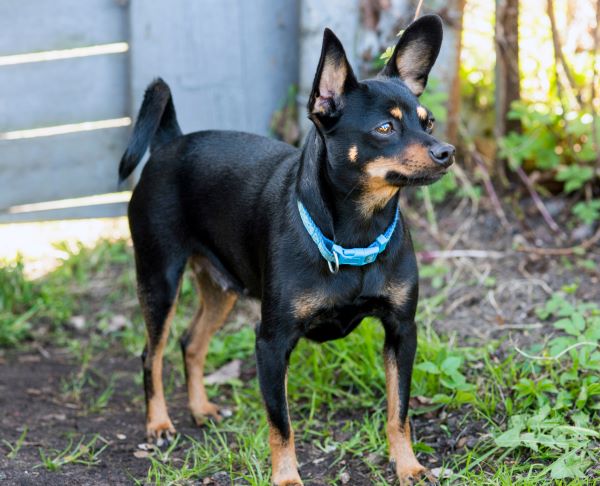
English Toy Terrier training and exercise
Active, swift, and athletic, the English Toy Terrier will benefit from one or two daily walks to maintain mental and physical health. Although their size gives them the appearance of being dainty and frail, they can in fact walk for many kilometres. As an active toy breed they can take care of their own exercise needs fairly well, making them suitable companions for the elderly and less-mobile.
While they enjoy relaxing on the sofa with their owner, they are equally keen to go outside and chase a few balls or run around and play vigorously. They love a challenge and are ideal candidates a variety of dog sports, such as obedience, agility, flyball and even freestyle dancing.
English Toy Terriers are easy to train and love learning new things, although like other terriers can be easily distracted. They are very intelligent and like to think their way through every situation. They enjoy pleasing their people and are best trained using positive, reward-based methods. They do not respond well to harsh corrections, so keep training sessions fun and filled with plenty of praise for jobs well done.
| Energy level | High |
| Exercise requirements | Medium |
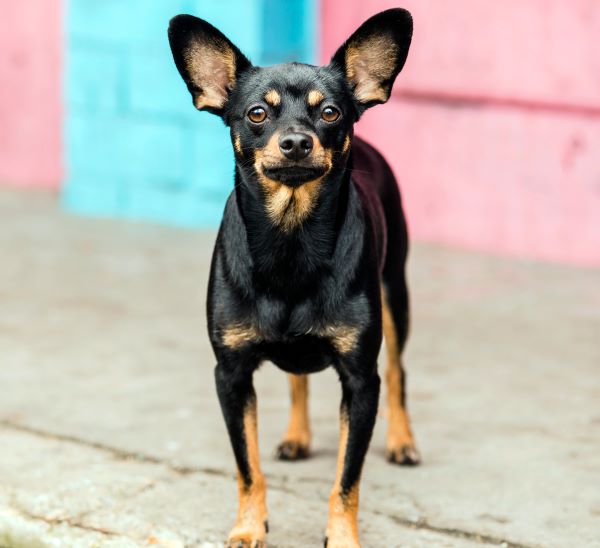
English Toy Terrier feeding and nutrition
English Toy Terriers are undemanding dogs to feed with no special dietary requirements and they generally have a good appetite. They should be fed a high-quality dog food appropriate to the dog’s age (puppy, adult, or senior), size and level of activity.
Some are prone to getting overweight, so watch your dog’s calorie consumption and weight level and give treats in moderation. Check with your vet if you have any concerns about your dog’s weight or diet.
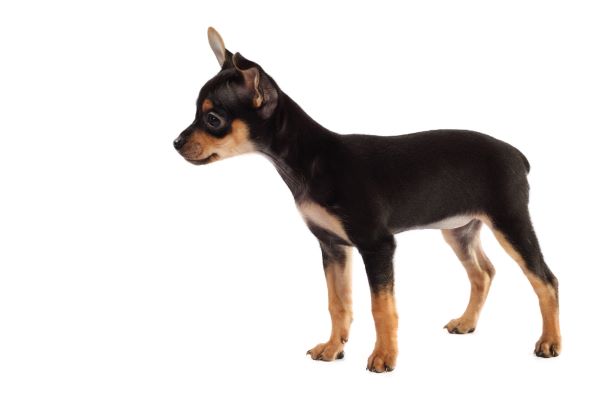
English Toy Terrier care and grooming
English Toy Terriers are a low maintenance, ‘wash and wear’ kind of dog. With a short, fine coat that requires little attention, an occasional bath when necessary, with a shampoo formulated for dogs, is all that is necessary to keep them looking and smelling clean.
Between baths, a weekly wipe down with a damp cloth will keep the coat glossy and shining. Regular ear cleaning and nail cutting are also required. They will look forward to grooming sessions as a bonding experience with the human whom they love!
Health issues for English Toy Terriers
- Patellar luxation is a very common issue among smaller dogs, occurring when the animal’s kneecap becomes dislocated from its thigh bone. It can be spotted if your dog limps or skips steps and this can start as young as 6 months old. Treatment can be as minor as a massage or as major as surgery.
- Demodectic mange is caused by a demodex mite, which is passed from the mother dog to her pups when they are very young. It lives in the hair follicles and can present as patches of red, scaly skin with bald spots on the head, neck and forelegs.
- Legg-Calve-Perthes disease occurs when blood supply to the hip area is decreased and is a common disease amongst the toy breeds. Symptoms can include limping or staggering. The condition can usually be corrected with simple surgery.

- Von Willebrand’s disease causes clotting problems in the blood. This can lead to excessive loss of blood after a cut, surgery or trauma and can result in a number of serious health issues.
- Juvenile Dilated Cardiomyopathy is an hereditary heart condition that can result in sudden death. Until the fatal arrhythmia happens, affected dogs appear healthy, with no signs of heart disease present before the sudden passing. For a number of affected puppies, their sudden passing occurred within a day of general anaesthesia, surgery or exercise.
- Eye Conditions can present themselves at different stages of life, including glaucoma and primary lens luxation. Cataracts are also found within the breed, but these usually do not become apparent until maturity.
Not all conditions are covered by Pet Insurance. For details of Bow Wow Meow Pet Insurance cover, refer to the Product Disclosure Statement.
Thinking about insuring an English Toy Terrier
Thinking about insuring an English Toy Terrier
Learn moreThinking about insuring an English Toy Terrier
Learn moreFree engraved pet ID tag on sign up3
Customer Satisfaction
21 day cooling off
Easy to use Pet Portal


